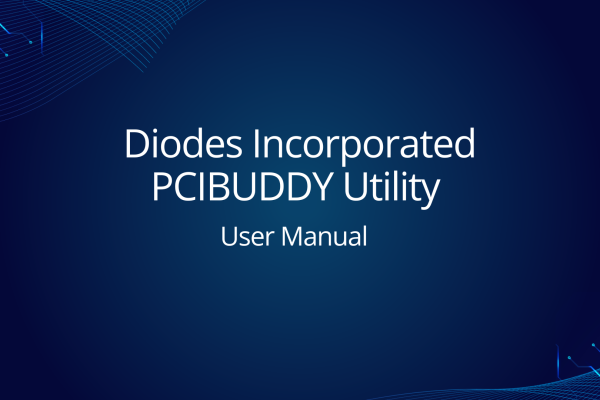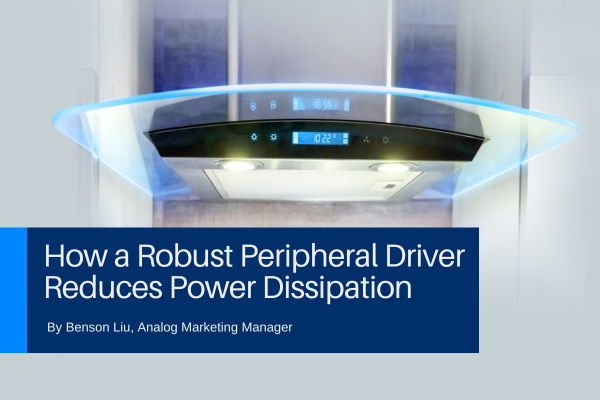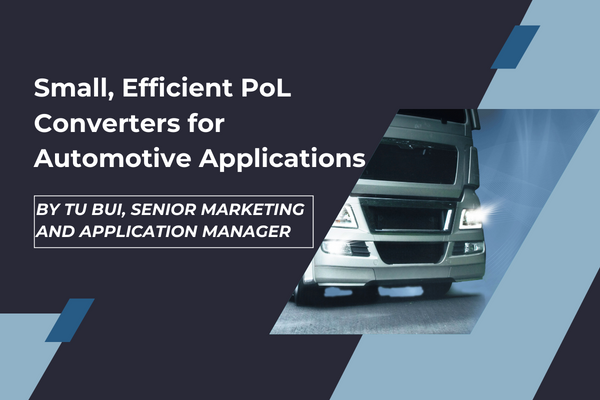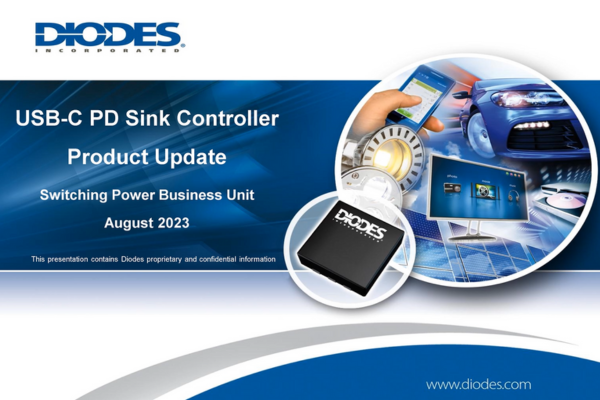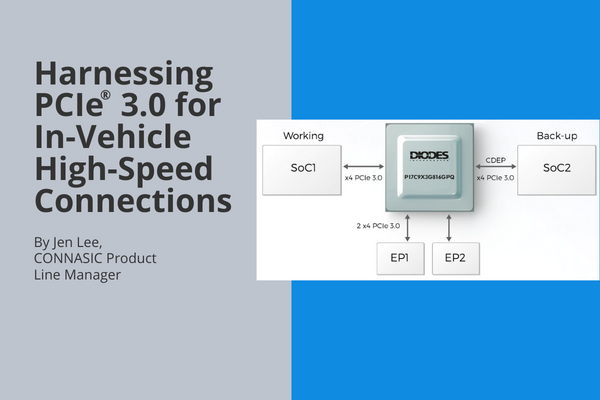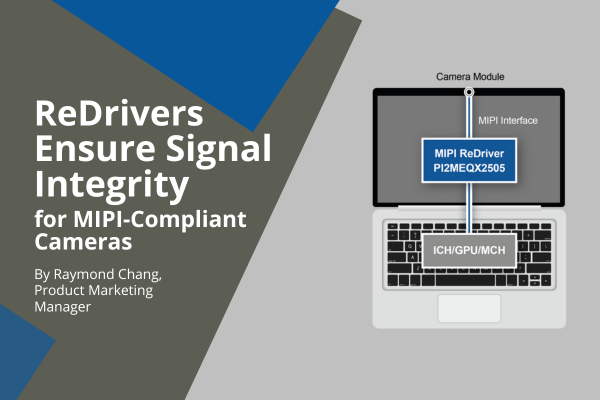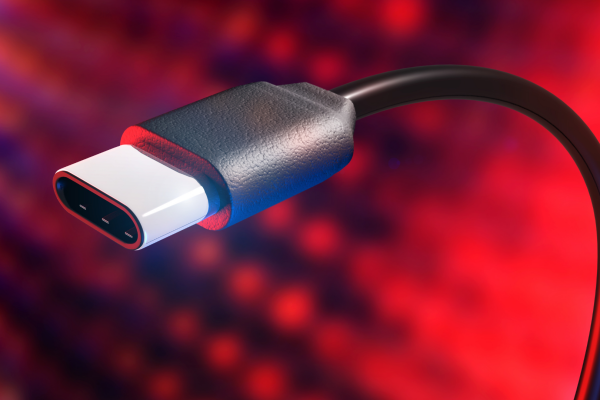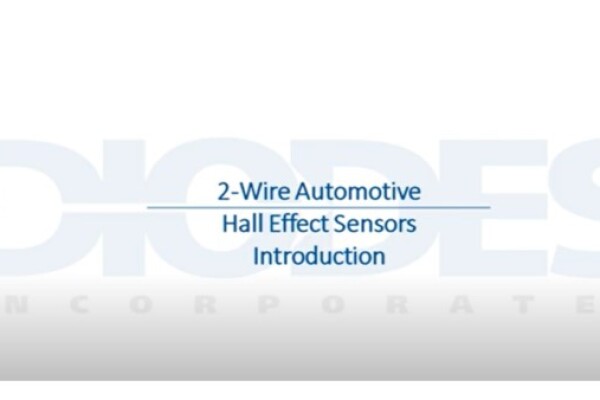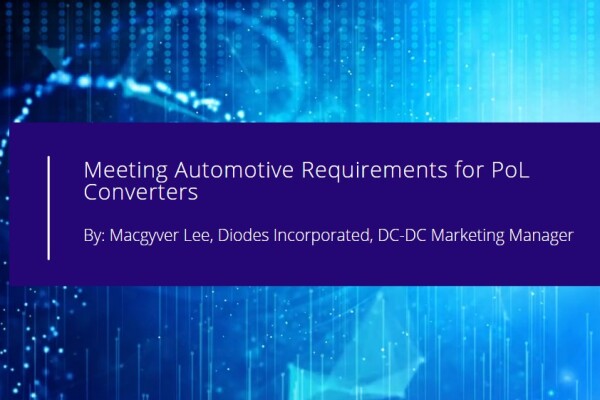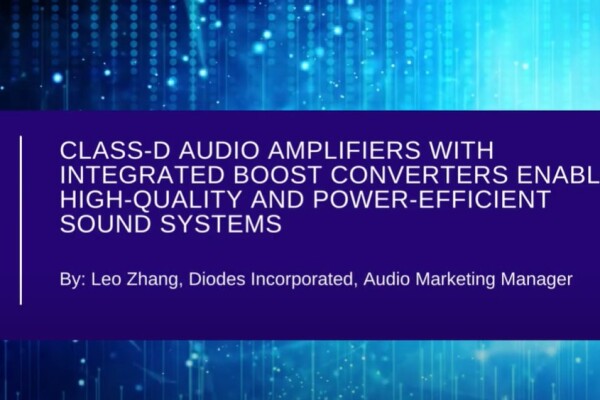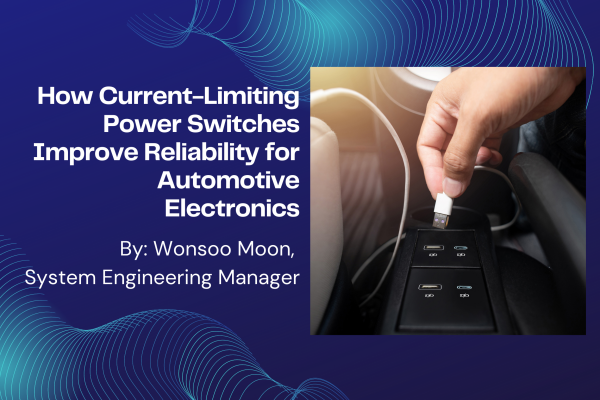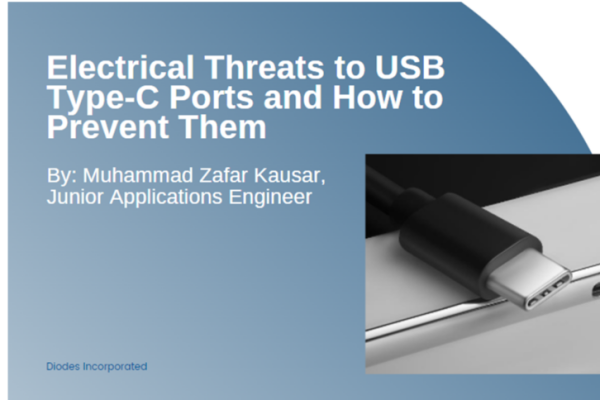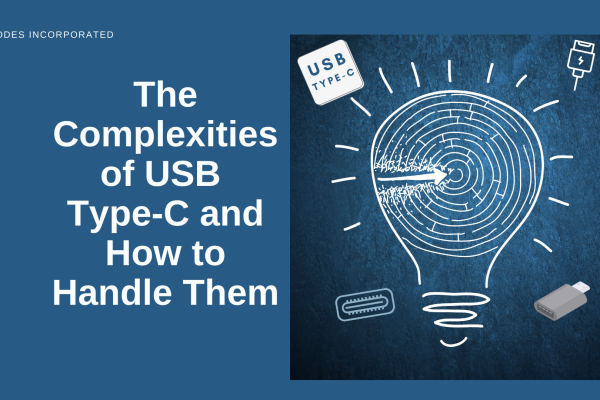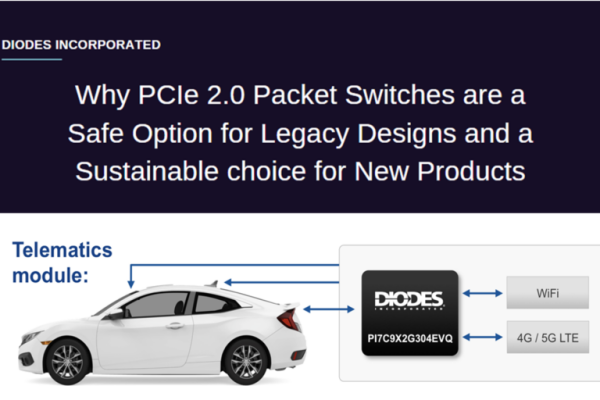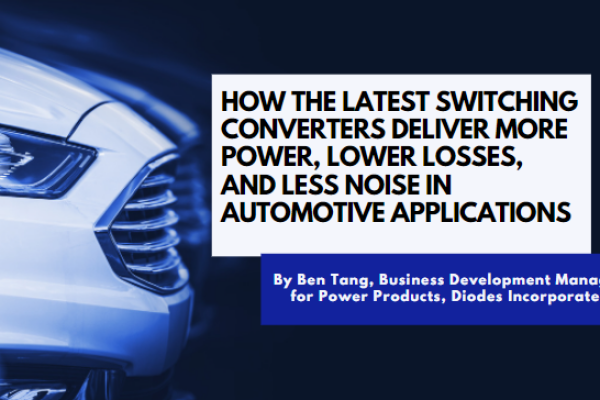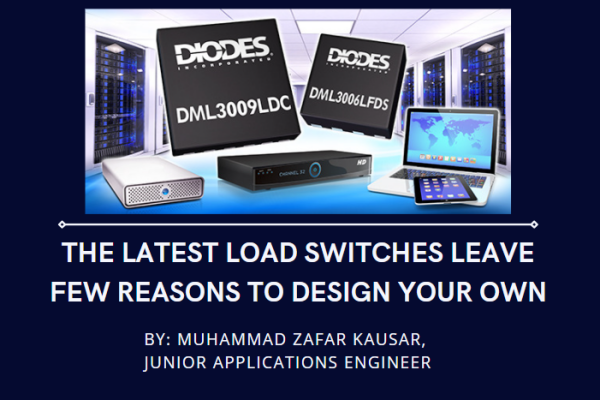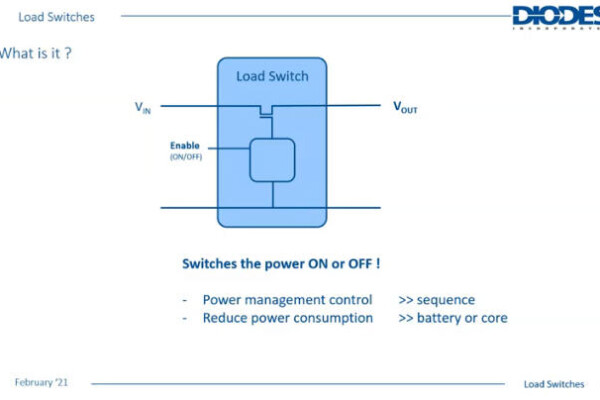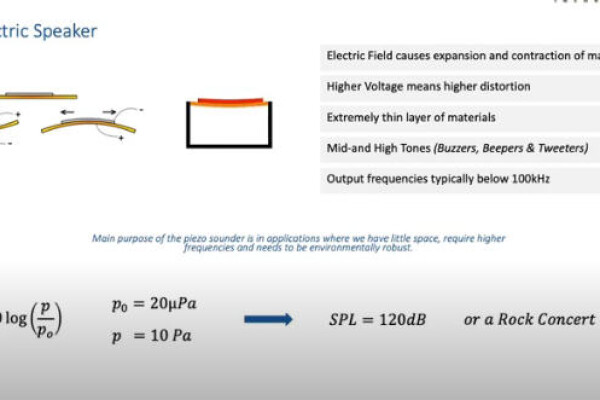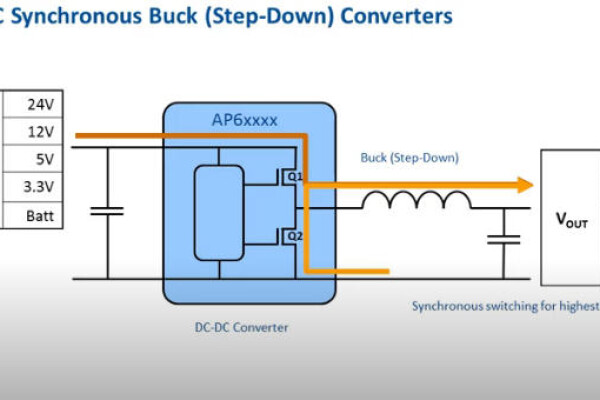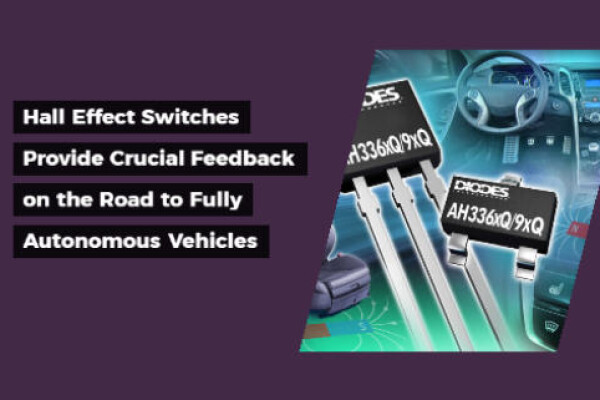Videos
View Diodes Incorporated's quick guides showing good design practices and demonstrations as well as other product-related videos.
Disclaimer: © Copyright Diodes Incorporated. All Rights Reserved. The materials contained herein are provided "AS-IS" without any warranty, and for informational purposes only. Use of these materials are subject to our Terms of Use.
-
EVB User Guide: AP33771C Introduction
This EVB Introduction guide goes over the main components of the EVB for the AP33771C device.
-
EVB User Guide: AP33772S Introduction
This EVB Introduction guide goes over the main components of the EVB for the AP33772S device.
-
Introduction to PCIBuddy Software Utility - User Manual
The PCIBuddy software utility provides several modes with different functions for developers and works for all Diodes Incorporated PCIe® Gen3 Packet Switches. Please contact Diodes’ sales for further information.
-
How a Robust Peripheral Driver Reduces Power Dissipation
Find out what makes peripheral drivers usable across a wide range of applications. (Blog preview)
-
Small, Efficient PoL Converters for Automotive Applications
The AP66200Q and the AP66300Q synchronous buck converters are built to power automotive point of load applications with high efficiency, wide voltage range, and small size. (Blog preview)
-
Diodes USB Sink Controller Product Update
Learn what USB-C PD source and sink controllers are for and why they are needed.
-
Harnessing PCIe® 3 0 For In Vehicle High Speed Connections
Our PI7C9X3GxxxGPQ series puts PICe 3.0 automotive-compliant packet switch technology to use for connected driving applications. (Blog preview)
-
ReDrivers Ensure Signal Integrity for MIPI Compliant Cameras
Optimized for mobile and IoT applications, the PI2MEQX2505 is an ideal solution for designers that require a ReDriver but are also concerned with system power consumption and layout size. (Blog preview)
-
Brushed Motors Are Not Going Away
Brushed motors currently, and will continue to, provide a more cost-effective solution to many applications.
-
USB Type-C PD3.0 Sink Controllers Enable Fast and Cost-Effective Charging
Device standardization and fast-charging devices are paving the way for cutting down on e-waste.
-
Two-Wire Automotive Hall Effect Sensors Introduction - Product Training Module
This product training module (PTM) goes over what a Two-Wire, Automotive Hall Effect Sensor is, magnetic behaviors, different applications, and a demonstration.
-
Meeting Automotive Requirements for PoL Converters
The automotive requirements for PoL converters are many, but our AP6320xQ and AP6330xQ are able to provide the necessary features and performance designers seek. (Blog preview)
-
Class-D Audio Amplifiers with Integrated Boost Converters Enable High-Quality and Power-Efficient Sound Systems
Reduce board space and minimize overall BOM cost with the PAM8965 stereo power amplifier. (Blog preview)
-
How Current-Limiting Power Switches Improve Reliability for Automotive Electronics
All devices in a car draw their power from the car’s battery—making them susceptible to spikes or surges in current, including surges during turn on and off. This susceptibility creates the need to provide protections against electrical damage. (Blog preview)
-
PCIe 3.0 Packet Switches are Evolving to Address Power- and Performance-Conscious Applications
The PCI Express® (or PCIe®) architecture has become the preferred interconnect standard in server and storage applications but they also need to be frugal with energy. Plus many applications look to them to cut utility costs, among other things. Read more on how packet switches can help.(Blog preview)
-
Electrical Threats to USB Type-C Ports and How to Prevent Them
The latest USB Type-C® (or USB-C®) interface and Power Delivery (USB PD) specifications help meet the demands for smaller, slimmer devices that deliver faster performance, more features, and extra flexibility. USB-C is highly resistant to user errors, such as incorrect plug insertion. However, there are some caveats. (Blog preview)
-
The Complexities of USB Type-C and How to Handle Them
The universal serial bus emerged in the mid-nineties and has now become a convenient and ubiquitous interconnect that greatly simplified setting up home and office computers, and saved laptop users from carrying a multitude of bulky cables to connect peripherals and accessories. Products featuring the latest USB Type-C® connector are now entering markets worldwide. Here are some ideas on how to maximize success. (Blog preview)
-
Why PCIe2.0 packet switches are a safe option for legacy designs and a sustainable choice for new products
PCI Express® standard, or PCIe® has become the de facto interconnect standard for embedded products by offering a great deal of flexibility with the benefit of guaranteed interoperability. (Blog preview)
-
How the Latest Switching Converters Deliver More Power and Less Noise in Automotive Applications
Electronic features are key selling points of today’s vehicles and the circuitry involved is dependent upon a stable supply of power. Read more about an automotive-compliant, integrated solution that leverages synchronous rectification to maximize energy efficiency. (Blog preview)
-
The Latest Load Switch ICs Leave Few Reasons to Design Your Own
Learn why our Load Switches offer more than the average competitor's in our latest Perspective blog written by Muhammad Zafar Kausar, Junior Applications Engineer. (Blog preview)
-
15min with Diodes - Load Switches
In today's session, we are joined by Ian Milne to discuss using Load (Power) Switches to manage Power Delivery.
-
15 Minutes with Diodes - Piezo Sounder Driver Application for Warning Signals
We are joined by Matthew Clark to discuss the Piezo Sounder Driver Application for Warning Signals - specifically discussing the PAM8904E/Q.
-
DC-DC Synchronous Buck Converter Introduction
This video covers what a synchronous buck converter is, explains basic buck converter operation, buck converter modes of operation, common control architectures, common device features, selecting buck converter ICs, selecting inductors, selecting input capacitors, selecting output capacitors, and PCB layout considerations.
-
Introduction to Circuit Protection
Isaac Sibson - Diodes Incorporated's Automotive Application's Engineer for Europe and North America goes over the essential elements of protection devices and delves into several types of devices and circuits, including Transient Voltage Suppressors (TVS), Over Voltage Protection (OVP), Over Current Protection (OCP), and Reverse Polarity Protection (RPP).
-
15 Minutes with Diodes - DC DC Bucks, focused on AP63xxx family
In today's session, we are joined by Ian Milne to discuss the use of Sync DC-DC bucks to step-down voltage rail.
-
15 Minutes with Diodes - Reverse Polarity Protection using p-FETs
In today's session, we are joined by Matthew Clark to learn how to avoid a damaged circuit when accidentally applying a battery voltage in the wrong direction via the utilization of protection devices.
-
How to Simplify Synchronous Rectification
With tens of billions of new devices expected to come online soon, including all the billions more that won't be connected, the need for small and efficient external power conversion continues to increase. (Blog preview)
-
Looking Beyond the Datasheet – New Ways to Use Devices
Current regulators are a basic building block that can be used wherever a circuit or device needs a steady and stable source of current. They will often be used when an unstable supply can have a negative impact. (Blog preview)
-
Why Logic Makes Sense
Widespread in use, standard logic devices are often the preferred way to conjoin parts of a circuit where reliable connections are required, or even when there’s a need to overcome a design challenge within a system. (Blog preview)
-
Great Things Come in Small (Outline) Packages
Gordon Moore’s prescient prediction of the ever-growing density of components on integrated circuits (ICs) continues to be proved right. Even if the recent growth is slowing down, the trend towards smaller packages continues apace. (Blog preview)
-
Efficient Offline Power for Small Online Appliances
It is widely acknowledged that, at its heart, the Internet of Things (IoT) comprises countless sensors, actuators, and other devices that add ‘intelligence’ to the connected world. For the IoT to work as intended, many of these devices must be switched on and connected 24 hours a day, seven days a week. (Blog preview)
-
Hall Effect Switches Provide Crucial Feedback on the Road to Fully Autonomous Vehicles
Although we still have a long road to travel, the automotive industry is well on the way to producing autonomous vehicles in production volumes. (Blog preview)


